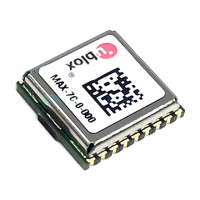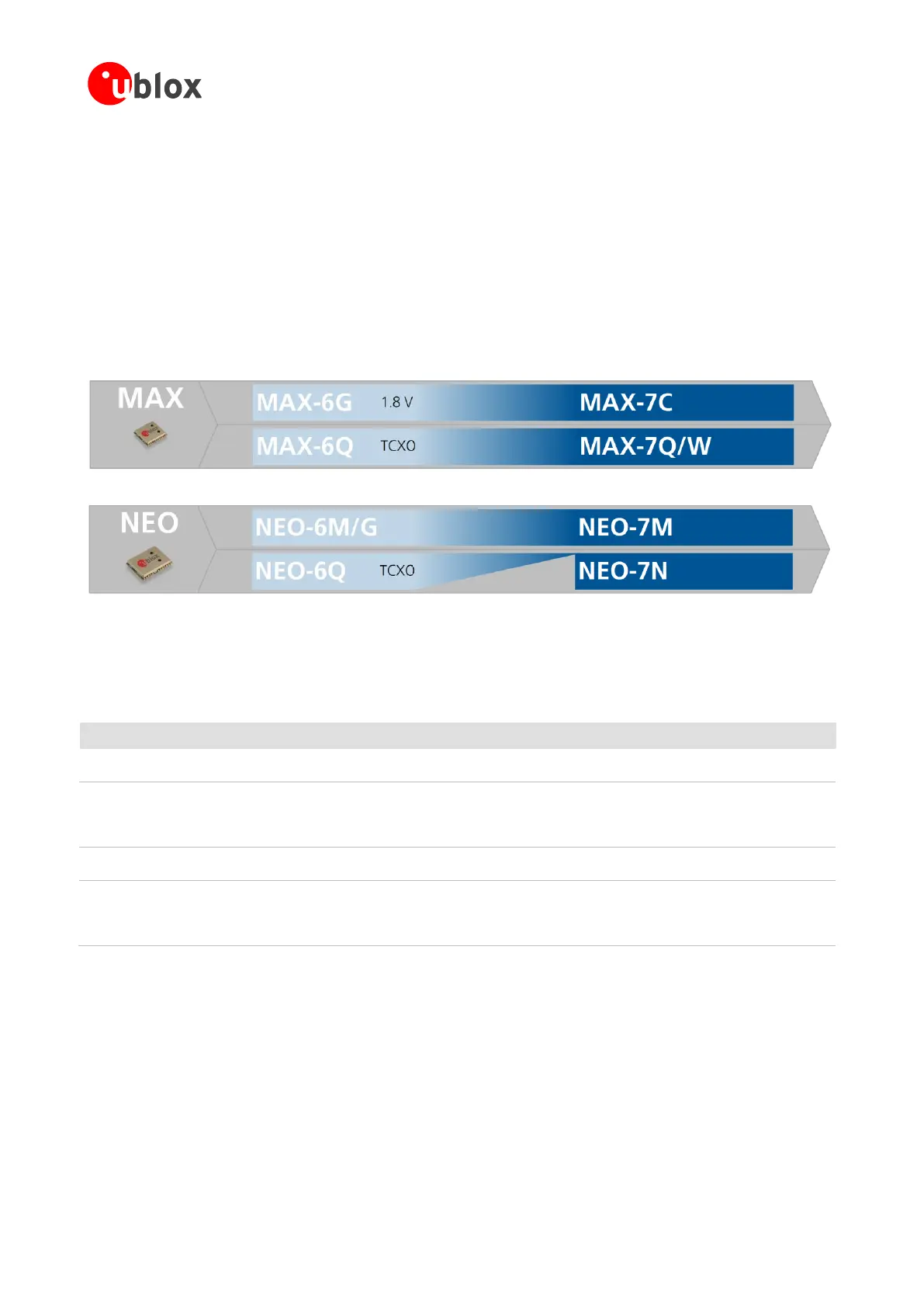MAX-7 / NEO-7 - Hardware Integration Manual
UBX-13003704 - R09 Production Information Migration to u-blox-7 modules
Page 35 of 52
6 Migration to u-blox-7 modules
6.1 Migrating u-blox 6 designs to a u-blox 7 module
Figure 30 below shows a recommended migration path from u-blox 6 designs to use with u-blox 7 modules.
u-blox is committed to ensuring that products in the same form factor are backwards compatible over several
technology generations. Utmost care has been taken to ensure no negative impact on function or performance
and to make u-blox 7 modules as fully compatible as possible with u-blox 6 versions. No limitations of the
standard features have resulted. It is highly advisable that customers consider a design review with the u-blox
support team to ensure the compatibility of key functionalities.
Figure 30: Module migration path
6.2 Hardware migration
6.2.1 Hardware compatibility:
Table 12 provides a summary of important hardware migration issues to note.
VCC, RF_IN, GND, USB pins, TxD, RxD, VCC_RF, SDA
and SCL
VCC, RF_IN, GND, TxD, RxD, VCC_RF, SDA and SCL
SPI implementation has changed:
With u-blox 6, SPI uses pins 2, 14, 15, 16.
With u-blox 7, SPI is available on pins 18, 19, 20, 21
when pin 2 set low. See Table 13
On-board RTC clock unavailable on MAX-7C, use the
“Single Crystal” feature instead.
UART/ DDC and SPI share the same pins and are
mutually exclusive.
No Configuration pins: use of e-fuse possible
(See Data Sheet for more information)
ANT_ON voltage level (VCC_IO)
Table 12: Summary of important hardware migration issues

